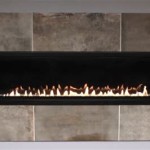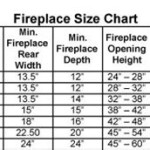Natural Stone Outdoor Fireplace Ideas In Japan
The allure of outdoor living has transcended geographical boundaries, permeating cultures and influencing architectural designs worldwide. In Japan, a country deeply rooted in tradition and an appreciation for nature, the integration of outdoor spaces into residential designs is a prominent feature. Natural stone, revered for its inherent beauty and durability, plays a crucial role in crafting outdoor fireplaces that blend seamlessly with the surrounding environment. This article explores various natural stone outdoor fireplace ideas prevalent in Japan, highlighting the aesthetic considerations, functional aspects, and the cultural context that shapes these designs.
Japanese gardens, often characterized by their minimalist aesthetic and emphasis on harmony, provide a perfect backdrop for outdoor fireplaces. These fireplaces serve not only as a source of warmth and light but also as a focal point that enhances the overall ambiance of the garden. The selection of natural stone is paramount, with considerations given to its color, texture, and its compatibility with the existing landscape.
Traditional Japanese architecture often incorporates natural elements extensively. Wood, bamboo, and stone are common materials, reflecting a deep connection with the natural world. This philosophy extends to outdoor fireplace designs, where natural stone is chosen to complement the existing architectural style of the house and the surrounding landscape. The use of local stone is particularly favored, as it helps to create a sense of place and reinforces the connection to the region.
The concept of "wabi-sabi," which celebrates the beauty of imperfection and impermanence, also influences the design of natural stone outdoor fireplaces in Japan. This aesthetic principle encourages the use of stones with natural imperfections, such as cracks, moss growth, or uneven surfaces. These imperfections are not seen as flaws but rather as part of the stone's unique character, adding depth and authenticity to the fireplace.
Key Considerations for Natural Stone Selection
Choosing the right natural stone is fundamental to creating an outdoor fireplace that is both aesthetically pleasing and functionally sound. Several factors must be considered, including the stone's durability, resistance to weathering, and thermal properties. Different types of natural stone offer varying levels of performance in these areas.
Granite, known for its exceptional durability and resistance to heat, is a popular choice for outdoor fireplaces. Its dense structure makes it impervious to water damage, and it can withstand extreme temperature fluctuations without cracking or crumbling. Granite is available in a wide range of colors and textures, making it a versatile option for various design styles.
Limestone, while not as durable as granite, offers a softer, more nuanced aesthetic. Its light color and subtle texture can create a warm and inviting atmosphere. However, limestone is more porous than granite and requires sealing to protect it from water damage and staining. It is also less resistant to extreme temperatures and may not be suitable for fireplaces that are used frequently or in harsh climates.
Sandstone, another sedimentary rock, offers a unique texture and color palette. Its earthy tones and natural grain patterns can add a rustic charm to an outdoor fireplace. Like limestone, sandstone is relatively porous and requires sealing to protect it from the elements. It is also susceptible to erosion over time, particularly in areas with high rainfall or exposure to wind.
Slate, a metamorphic rock known for its distinctive layered appearance, is a durable and aesthetically pleasing option for outdoor fireplaces. Its dark color and smooth texture can create a sleek and modern look. Slate is also relatively impervious to water damage and can withstand extreme temperatures. However, it can be more expensive than other types of natural stone.
In addition to the type of stone, the size and shape of the stones used in the fireplace construction are also important considerations. Larger stones can create a more imposing and dramatic look, while smaller stones can create a more subtle and refined appearance. The shape of the stones can also influence the overall aesthetic, with rounded stones creating a softer look and angular stones creating a more modern and geometric feel.
Design Styles and Integration with Surrounding Environment
The design of a natural stone outdoor fireplace should be carefully considered to ensure that it complements the surrounding environment and reflects the homeowner's personal style. In Japan, several distinct design styles are commonly employed, each with its unique characteristics and aesthetic appeal.
A traditional Japanese garden design often features a simple, understated fireplace made from natural stone. The focus is on creating a harmonious balance between the fireplace and the surrounding landscape, with the stone chosen to blend seamlessly with the existing rocks, plants, and water features. The fireplace may be incorporated into a stone wall or built as a freestanding structure, often with a simple mantle or hearth.
A more modern design may incorporate clean lines and geometric shapes, using natural stone as a contrasting element to the sleek surfaces of the house. The fireplace may be built as a focal point in a patio or deck area, with seating arranged around it to create a comfortable outdoor living space. The stone may be polished or sandblasted to create a smooth and uniform texture, or it may be left in its natural state to add a rustic touch.
For homes with a more contemporary aesthetic, a minimalist fireplace design may be preferred. This style typically features a simple, unadorned structure made from natural stone, with a focus on functionality and efficiency. The fireplace may be built into a wall or integrated into a built-in seating area. The stone is often chosen for its color and texture, with a preference for natural materials that complement the overall design of the house.
The integration of the fireplace with the surrounding environment is a crucial aspect of Japanese outdoor design. The fireplace should be positioned in a location that takes advantage of natural views and provides shelter from the wind. It should also be placed in a way that minimizes its impact on the surrounding vegetation, ensuring that it does not obstruct sunlight or damage tree roots.
Landscaping plays a vital role in integrating the fireplace with the surrounding environment. Plants and shrubs can be used to soften the edges of the fireplace and create a sense of privacy. Stone pathways can be used to connect the fireplace to other areas of the garden, creating a cohesive and inviting outdoor space. Water features, such as ponds or waterfalls, can also be incorporated to add a sense of tranquility and enhance the overall ambiance of the garden.
Functional Aspects and Construction Techniques
Beyond aesthetics, the functional aspects of a natural stone outdoor fireplace are equally important. The fireplace should be designed and constructed to provide adequate heat and ventilation while ensuring safety and durability. Several construction techniques and materials are commonly used in Japan to achieve these goals.
The construction of a natural stone outdoor fireplace typically begins with a solid foundation made from concrete or compacted gravel. This foundation provides a stable base for the fireplace and prevents it from sinking or shifting over time. The foundation should be designed to withstand the weight of the stone and the heat generated by the fire.
The firebox, which is the area where the fire is burned, should be constructed from fire-resistant materials, such as firebrick or cast iron. These materials can withstand high temperatures without cracking or crumbling. The firebox should be properly ventilated to ensure that the fire burns efficiently and that smoke is drawn away from the seating area.
The chimney, which is the structure that carries smoke away from the firebox, should be constructed from durable and heat-resistant materials, such as brick or stone. The chimney should be properly sized to ensure that smoke is drawn away from the firebox efficiently. It should also be capped to prevent rain and snow from entering the fireplace.
The mortar used to bind the stones together should be specifically designed for use in outdoor fireplaces. This type of mortar is resistant to weathering and can withstand extreme temperatures without cracking or crumbling. The mortar joints should be properly sealed to prevent water from seeping into the fireplace and causing damage.
Safety is a paramount concern when constructing an outdoor fireplace. The fireplace should be located away from flammable materials, such as trees, shrubs, and wooden fences. A spark arrestor should be installed on the chimney to prevent sparks from escaping and potentially igniting nearby vegetation. A fire extinguisher should be kept nearby in case of emergency.
In addition to these basic construction techniques, several other features can be incorporated into a natural stone outdoor fireplace to enhance its functionality and aesthetic appeal. These features include built-in seating, storage for firewood, and lighting to illuminate the surrounding area. These features can be customized to suit the homeowner's individual needs and preferences.
The incorporation of natural stone in outdoor fireplace design in Japan reflects a deep appreciation for nature, a sensitivity to aesthetic principles, and a commitment to functional design. The careful selection of materials, the thoughtful integration with the surrounding environment, and the meticulous construction techniques all contribute to creating outdoor fireplaces that are not only beautiful but also functional and enduring.

Patio Of The Week Rustic Modern And Japanese Inspired

Feature Project Cozy Urban Oasis With A Japanese Feel Paloform

Feature Project Cozy Urban Oasis With A Japanese Feel Paloform

Patio Of The Week Rustic Modern And Japanese Inspired

Patio Of The Week Rustic Modern And Japanese Inspired

Fire Pits Services List Niwa Design Studio Ltd

Outdoor Fireplace Design Secrets From An Expert

Patio Of The Week Rustic Modern And Japanese Inspired Remodel

Outdoor Fireplace Design Ideas

Japanese Garden Design








